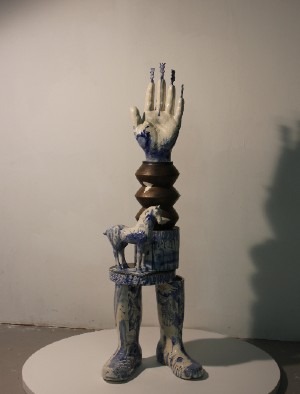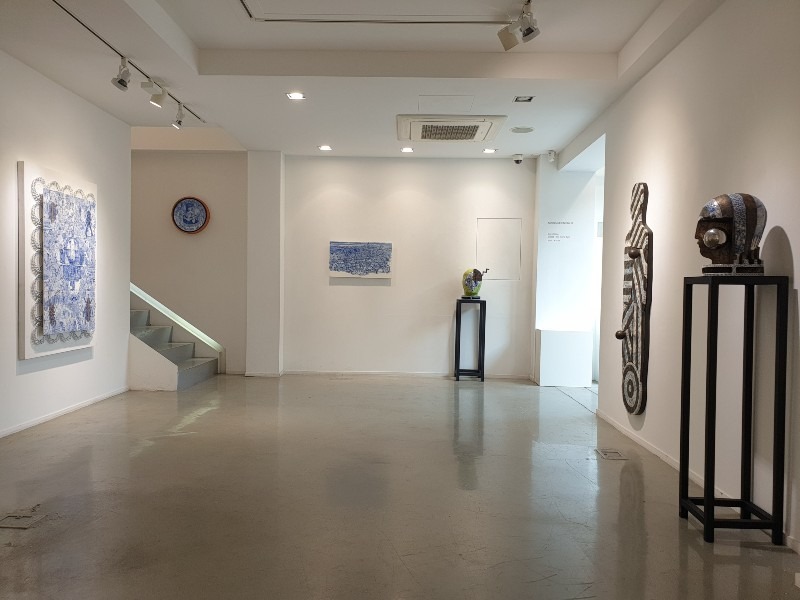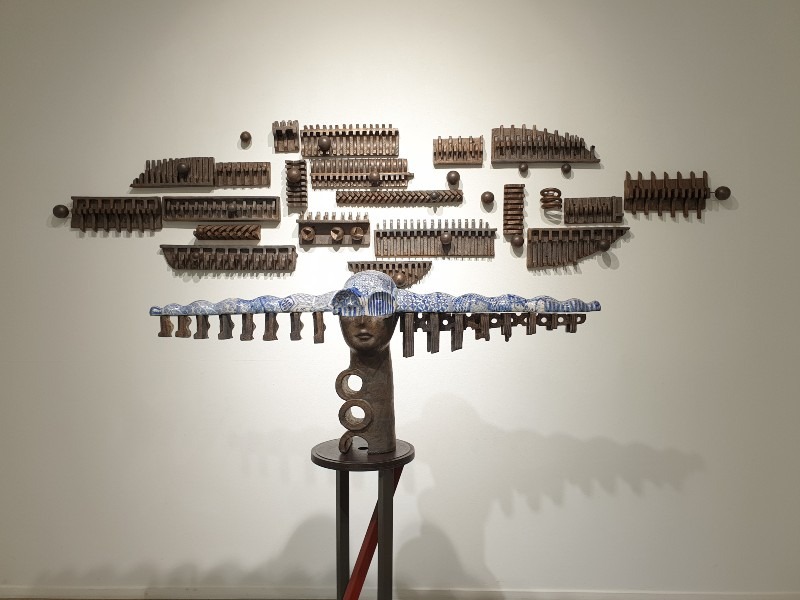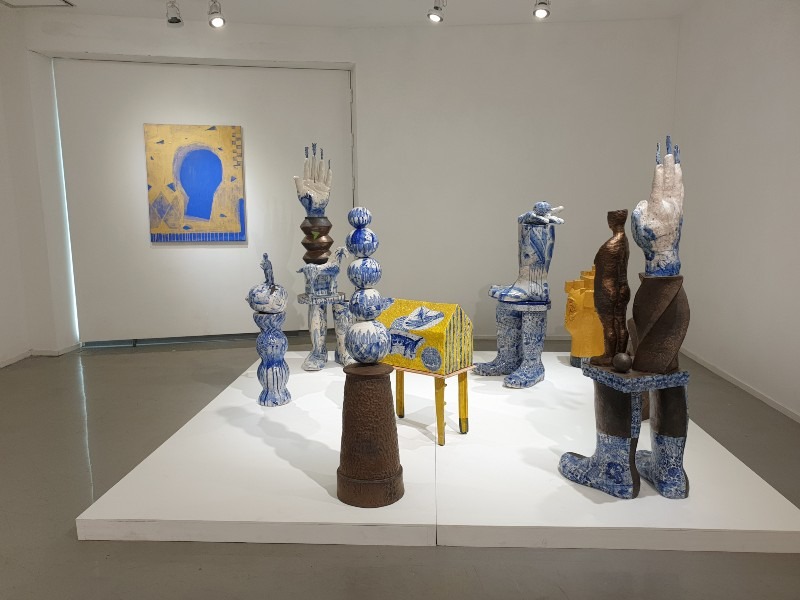
| Period| | 2021.07.08 - 2021.08.25 |
|---|---|
| Operating hours| | mon-fri 11:00 - 19:00 sat 11:00 - 18:00 |
| Space| | Gallery Choi |
| Address| | 17-7, Tojeong-ro, Mapo-gu, Seoul, Republic of Korea |
| Closed| | Sun. public holidays |
| Price| | Free |
| Phone| | 02-323-4900 |
| Web site| | 홈페이지 바로가기 |
| Artist| |
|
정보수정요청



|
|
Exhibition Information




(...) Jeongbeom Kim, a ceramic artist: The way to rule and overcome the time Dong-Yeon Koh (Art Historian) Discerning crafts and fine arts is rather important issue than we think. In the beginning of 20th century, European society started to move forward from feudal social system of the past, and the contemporary art also had to join such social atmosphere at the time. Thus, an attempt of separating fine arts from crafts and empowering the superiority to fine arts has more meaning than just to position its place in art history or art discourses. In arts, it is a way to realize the notion of contemporary time that desires to move forward through breaking with tradition in the past. Of course, such obsession became an age-old relic. Yet it doesn’t mean that it’s easy for fine artists to embrace the tradition derived form the past in their art works. To do so, many things such as knowledge, love and passion for art history along with highly trained technical skills are required. In that, potteries, tableaux, and installation works of Jeongbeom Kim, the artist have a reason to receive attention because Kim’s works use, in one hand, images depicted from the master pieces in Western art history along with the consistent use of traditional Qingbai(靑白) ceramic technic, and in the other hands, implement social issues and temporality as a main theme. Such practice not only indicates the feature of Kim’s work, which is shown in the process of mixing various different categorizations such as crafts versus paintings, three dimensions versus two dimensions, and ceramic works versus installation works, but also, and above all, becomes a proof that implies the attitude of the artist toward the notion of time in contemporary context. While sticking to the oldest form of art, ceramic, in the history of mankind, he desires to show his journey by realizing expressive paintings on ceramics, creating illusions of fathomless tunnel with lightening bulbs, and conceiving the process of rearranging the parts at the backside of clock in order to depart from the singular temporality limited to past, present and future. Appropriation of Qingbai(靑白) ware in contemporary context: Ceramic In the process of handling ceramics as a medium of the artwork, Jeongbeom Kim faithfully follows the traditional way. But the attitude of the artist toward traditional way doesn’t only stay on technical side. Take his favorite color, blue, for an example. Heavenly color derived from the mural painting of Giotto, who is a master in the early Renaissance, is famous for evoking the most pious and calm emotional reaction from beholders. Chinese ceramics spread throughout European aristocrats in 17th century also consisted of white and cobalt-blue series of colors. Dutch merchants established East India Company to tonify Chiense Qingbai(靑白) ware in Europe and it gave them huge fortune. Ever since, such blue became a symbol of noble and exotic Chinese ceramic to Europeans. Meanwhile, Unpredicted elements appear on plates, paintings and tiles made of ceramic. <Skull>(2018), tiled up on sizable canvas, shows brushstrokes in colossal cruciform beneath the tiles attached in the center of canvas. Impulsive brushstrokes in cobalt blue and gold, which is symbols of noble and precious color, also appear on the blank space of ceramics. Such strokes are the artist’s ontological proof in the artwork. The thickness and direction of brushstrokes reflect rather personal and momentary status of the artist than the skills that is traditionally acquired and passed down. The more impulsive and irregular the strokes become, the more distinctive the artist’s character reveals. Besides, the motives painted on the ceramics in blue includes something unusual clutters such as gun, machineries or all sorts of small things that people face and use in their mundane life. Hence, Jeongbeom Kim’s work, from a distance, reminds of traditional pottery or Chiense Qingbai(靑白) ware embodying a little of European motive, but from up close, uncanny elements such as human figures, likely depicted from aristocrats in the masterpieces of art history, with mundane objects of contemporary people, are mixed up like a picture puzzle. In that, his ceramic embedded Kim’s expressive and creative elements in such craft-like outward form. Encounter an abyss in the time of Innocence: Speaking of the coexistence of ill-matched elements in Kim’s work, the latest work, <Innocent> becomes more dramatic. Since 1990s, Kim has been using head-shaped figures. Recently, such figures somehow merge with the tragic images often seen from the foreign presses and remind people of children or refugees left in horrible disasters. In fact, as a part of story painted on the tile, there is an image of a child sitting alone right in front of a huge mushroom cloud, which implies a massive explosion. The ratio of forehead in entire face, short nose, and round chin denote the typical type of child’s head shape. However, such small head shape happens to retain peculiar charisma by encountering Kim’s solemn materials. Especially the head shape, which would be the centerpiece of this exhibition, is made of rusty thick wire. Of course, without fail, contemporary materials are used along with old ones. Child’s head shape is inferred from the rusty wire, which implies the time course. On the contrary, the lower part of entire head shape holds metal wheels resembling those on a toy. In the center of inner side of head shape, a reflective mirror is positioned. The light emitted from a bulb at lower side is reflected on the mirror, and the surface of the mirror creates a deep illusion. Lines of the bulb light radiate on the mirror (or more likely down in the mirror) and the tunnel, probably seen in Si-Fi movie, appears in the mirror. On the mirror, a fossil like sculpture lays. Thus, the bottomless abyss spreads out inside the child’s head shape, titled <Innocent>. Unfamiliarly laid bulbs play a role as ‘Time Machine’ along with the wheels at the lower part. The mirror that creates the illusion of depth and the fossil-like sculpture placed on the mirror become a strange combination, too. It can be seen as where two images of the time of highly advanced civilization and the ruins after the time cross. What makes this interesting is that all those time confusions exist inside the child’s head shape that supposedly ‘looks innocent’. The child stood at the starting point of life may already have travelled the time and become a being in the afterlife. At a point where the past and the future connect After all, to the artist, the past and the present are one. The past is consistently found in the present as well as the present countlessly borrows the language from the past. If the realistically painted images depicted from mundane objects or suggestive events signify ‘here, and us’, Kim realizes ‘here, and us’ in the style of Chiense Qingbai(靑白) ware. As if traditional artisans did, he perfectly realizes the details of the work, and it can be a subjugating process to tradition from the past. However, at the same time, the brushstrokes occasionally appeared in the work become a trace of Kim’s struggle to break away from the old tradition. Lastly, the work <Blue Ocean>, which dissembles parts comprising a clock, and aims to realize not the exterior of the clock, but beyond the exterior of clock, may be the simplest work but deals with the time (or temporality) directly. The clock, as an objective tool to measure the time, loses its natural role by getting dissembled. In the meanwhile, human beings subjugated in the stream of time at least attempt to escape from such temporality by dissembling the clock. This, in the perspective of life attitude, denies the course of the time laid on collinear line of past, present and future, and tries to get away from emotional and psychological detention unknowingly forced to us by the time. In other words, it means to discard the linear thought that certain behavior in the past simply will be connected to present and future. As a potter and artist who has been practicing for almost four decades, not only merging the styles and materials of past and present but also dealing with temporality as a theme is meaningful work in both personal and art historical perspectives. In Kim’s artistic journey, he doesn’t seem to make a goal-oriented move for certain level of achievement but rather seems to get away from the pressure based on goal-oriented attitude. In the fast flowing time, it’s not possible to over come the hidden fear in people. Just like the light consistently reflected on the mirror, hope and fear consistently coexist in the manner of present continuous. Moreover, contemporary people has been pushed and bound more and more by the time since the advanced technologies aid to over come the time and the space in order to work and communicate more efficiently. In that, we could fine the reason to stare at Jeongbeom Kim’s lightening bulbs in the dark abyss of <Innocent>. How would we define ourselves in such temporality? (source=gallery choi)
